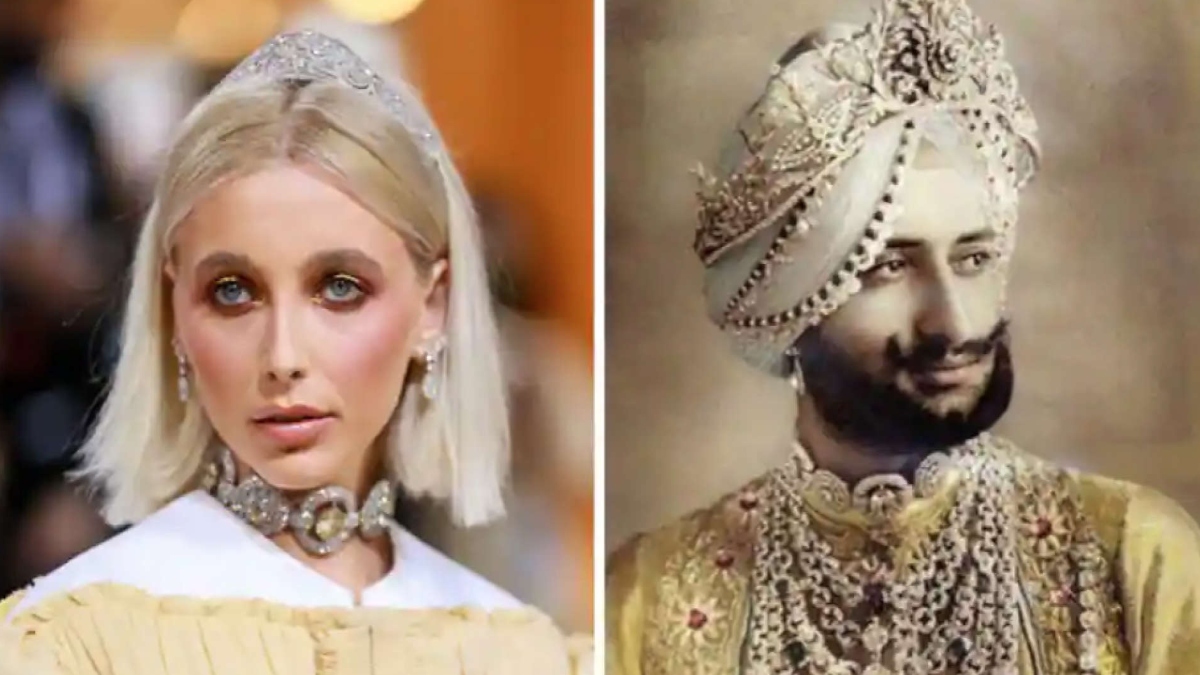
T he world’s eyes once again got trained on our majestic maharajas and their jewels. All thanks to the appearance of social media queen and American YouTuber Emma Chamberlain who appeared for the Met Gala this year wearing a ‘very gilded’ necklace around her slender neck. Now, the theme of the gala was ‘Gilded history’ and the collar she wore could not have been more historic. Given that it allegedly belonged to the Maharaja of Patiala and was restored to its original brilliance by the Paris-based jewellery house Cartier not so long back. Netizens went to town calling it ‘colonial appropriation’. Popreset, who calls himself the pop culture god and is followed by 11k Instagrammers, claimed, “No shade to Emma since she is the Cartier Ambassador but, this is a very important historic piece that should have been returned to the Patiala royal family and not made into a fashion statement.” In defence of Cartier, leading author and historian Cynthia Meera Frederick claimed, “Cartier never said that it is the original choker or a reconstructed piece. There is no official statement on that.” To which yet another Instagrammer claimed, “There is nothing Indian about the necklace except that it was bought by an Indian potentate.”


Indeed Cartier’s official press room has not made an official statement on its originality. It was in 1889 that Maharaja Bhupinder Singh of Patiala spotted and bought the seventhlargest diamond in the world, mined a year before in South Africa at the Paris Universal exhibition, gest diamond at the time. Bought from De Beers, it had a 428 carats pre-cut weight, and it weighed 234.65 carats in its final setting. It is the largest cushion-cut yellow diamond and the 2nd largest yellow-faceted diamond in the world. In 1925, the Maharaja travelled to Paris, bringing with him numerous trunks of precious stones: diamonds, emeralds, sapphires, pearls and rubies of the highest quality set in antique Indian settings, which he decided to have reset at Maison Cartier. The Maharaja commissioned Cartier to turn the De Beers diamond into an heirloom piece and make a ceremonial necklace with the diamond being its centrepiece. It was finally completed in 1928. The necklace has five rows of platinum chains embellished with 2,930 diamonds, including as its centrepiece the world’s seventh-lar. The necklace also contained seven other large diamonds ranging from 18 to 73 carats, and a number of Burmese rubies. This was the most expensive piece of jewellery ever made in history and it would have cost some US$ 30 million dollars today in its original form. The necklace disappeared from the Royal Treasury of Patiala around 1948. In 1982, at a Sotheby’s auction in Geneva, the De Beers diamond reappeared. There, the bidding went up to US$ 3.16 million, but it is unclear whether it met its reserve price. In 1998, part of the necklace was found at a second-hand jewellery shop in London by Eric Nussbaum, a Cartier associate. The remaining large jewels were missing, including the Burmese rubies and the 18 to 73 carats diamonds that were mounted on a pendant. Cartier purchased the incomplete necklace and after four years, restored it to resemble the original. They replaced the lost diamonds with cubic zirconia and synthetic diamonds and mounted a replica of the original De Beers diamond. The fate of the choker worn by Emma though remains unknown. And, no one knows whether it disappeared with the necklace or if it was sold. It was the collar that Emma wore and what would have seemed like a proud moment for the Maharaja era, turned into another reason to scowl at ‘Imperialist Europe’. History has it that the Maharajas came out into the durbar flaunting the family jewels that were not just objects of desire but also a way to reflect the Princely state’s affluence and political well being. The Patialas were known for this practice and like their coffers, many toshakhanas went empty post-independence, especially when the privy purses got banned by the then government. As Cynthia admitted, “So many royal pieces were either sold or dismantled. This is, unfortunately, a sad reality which cannot be denied.”